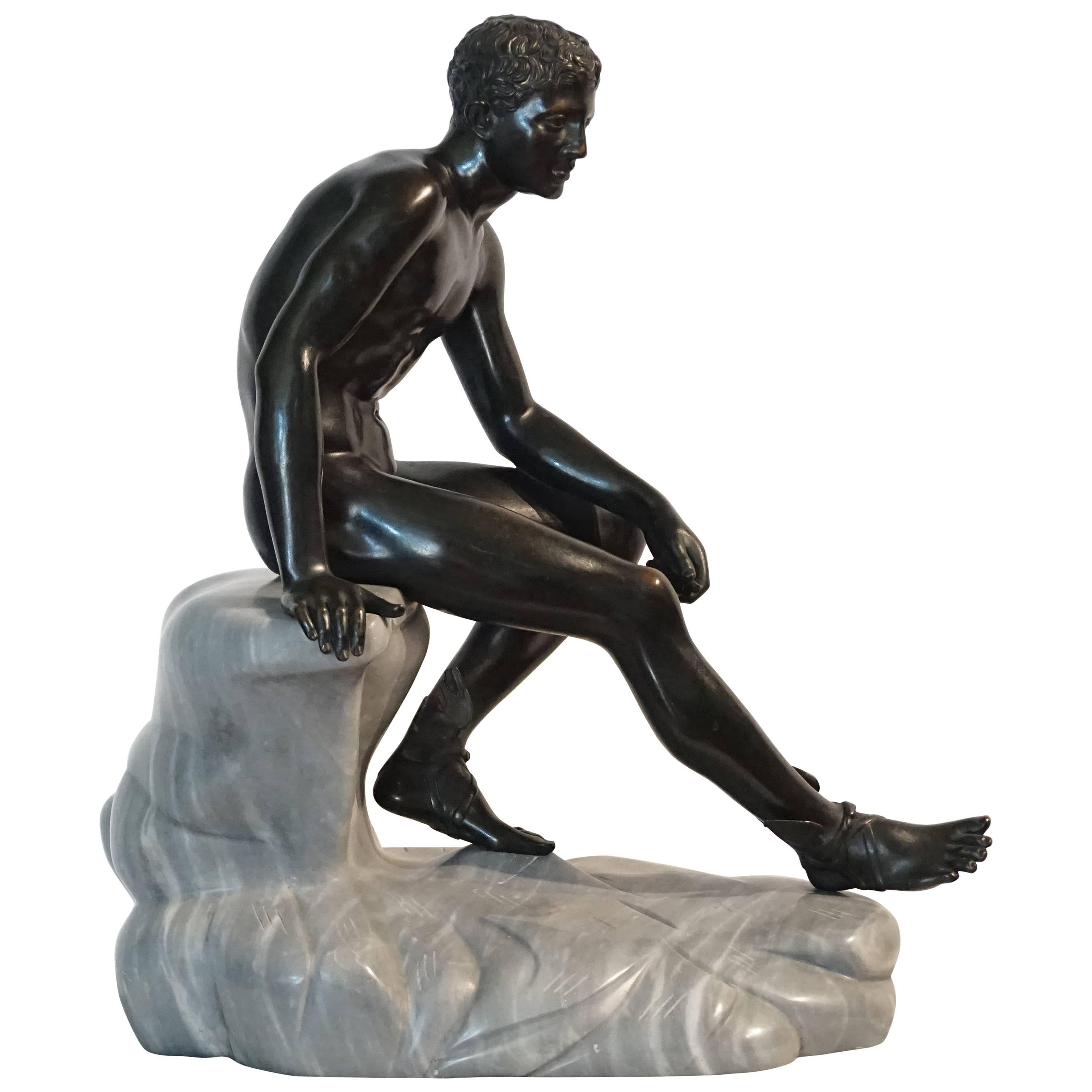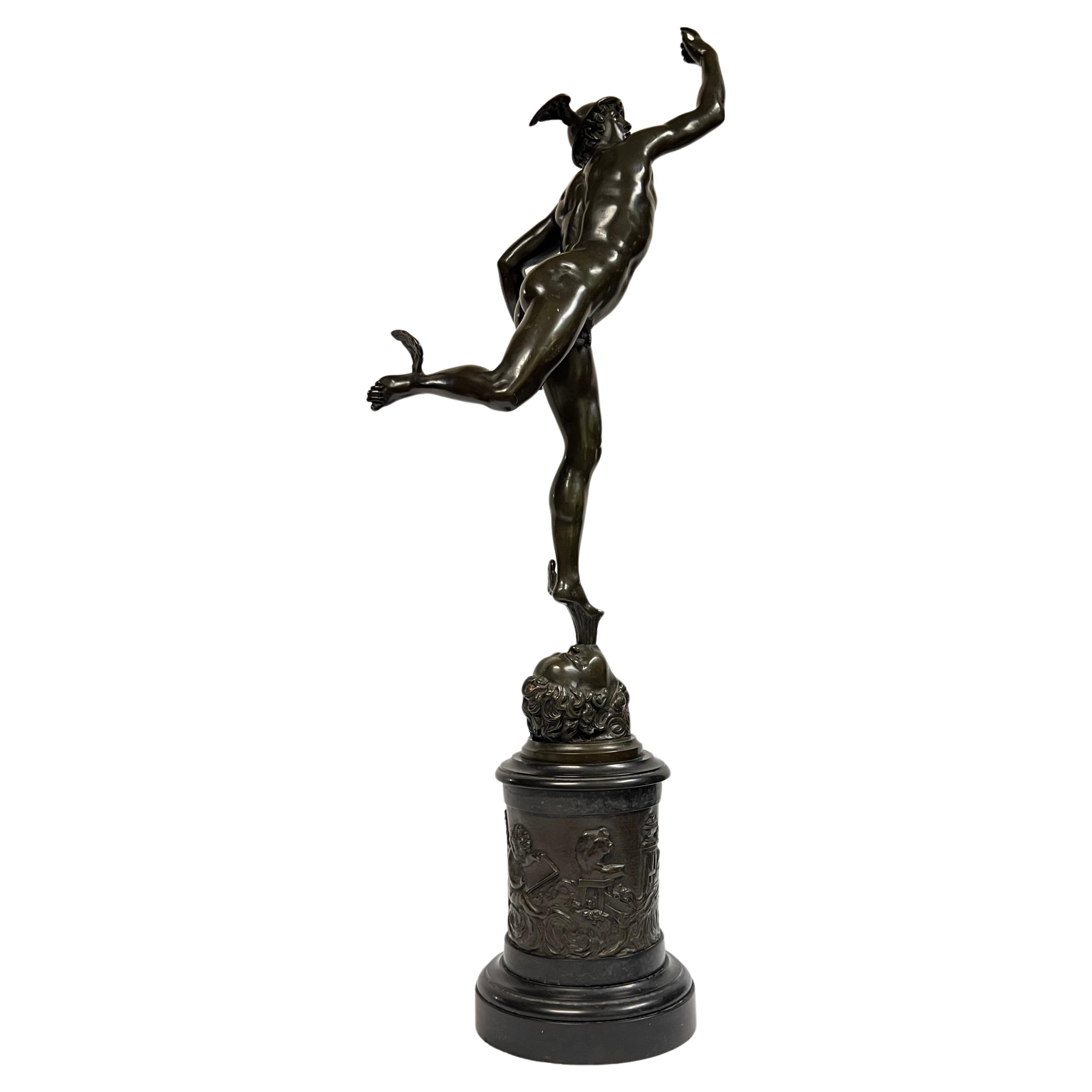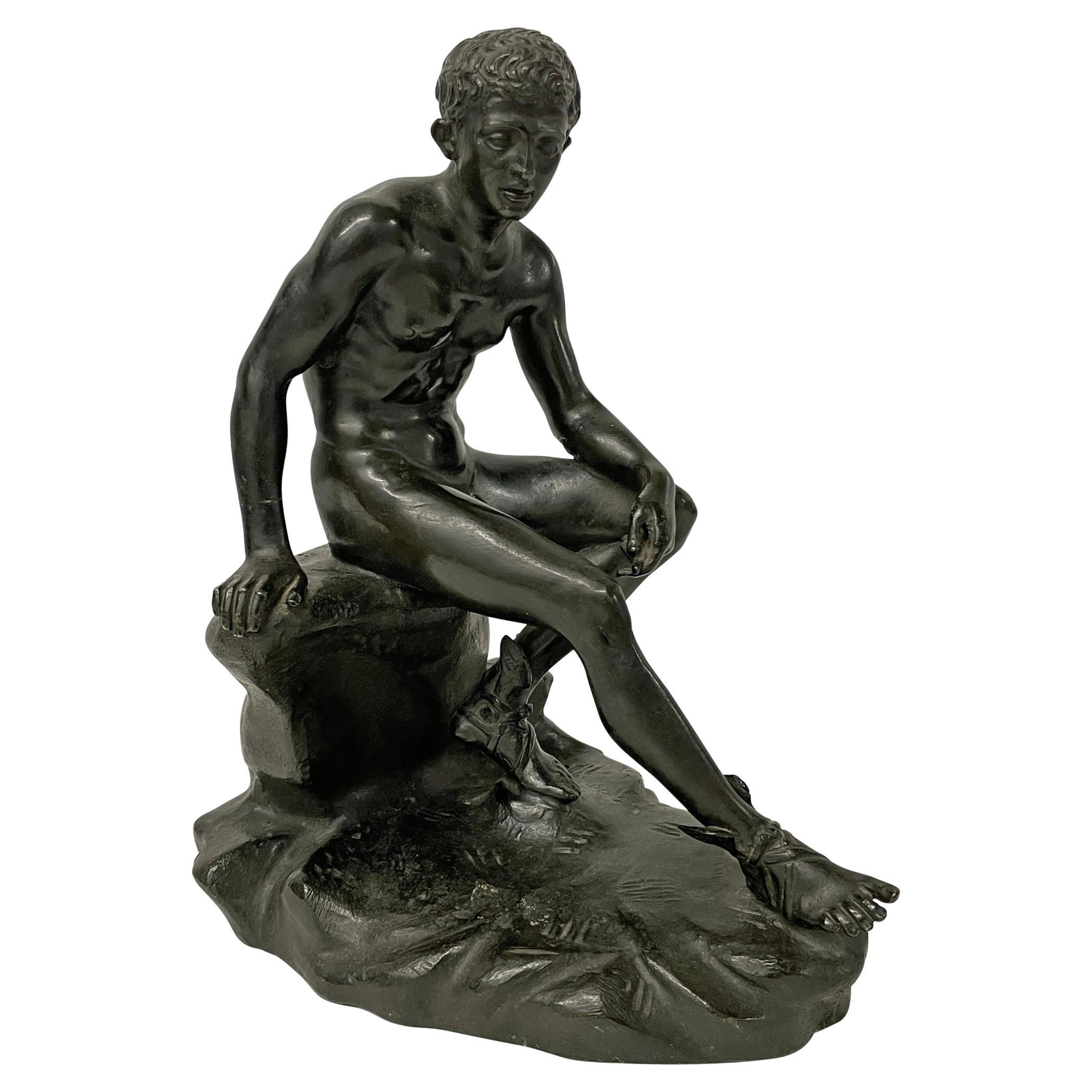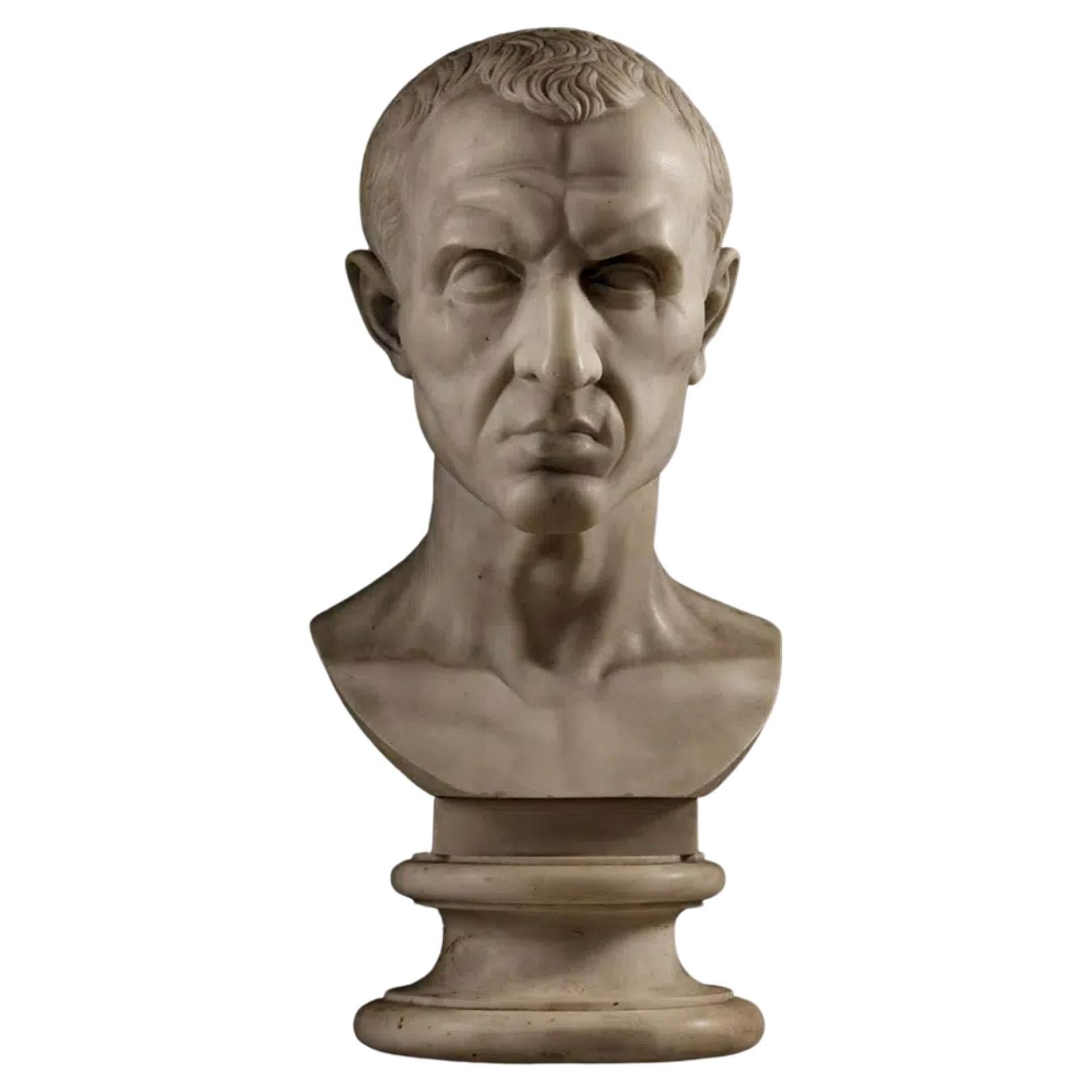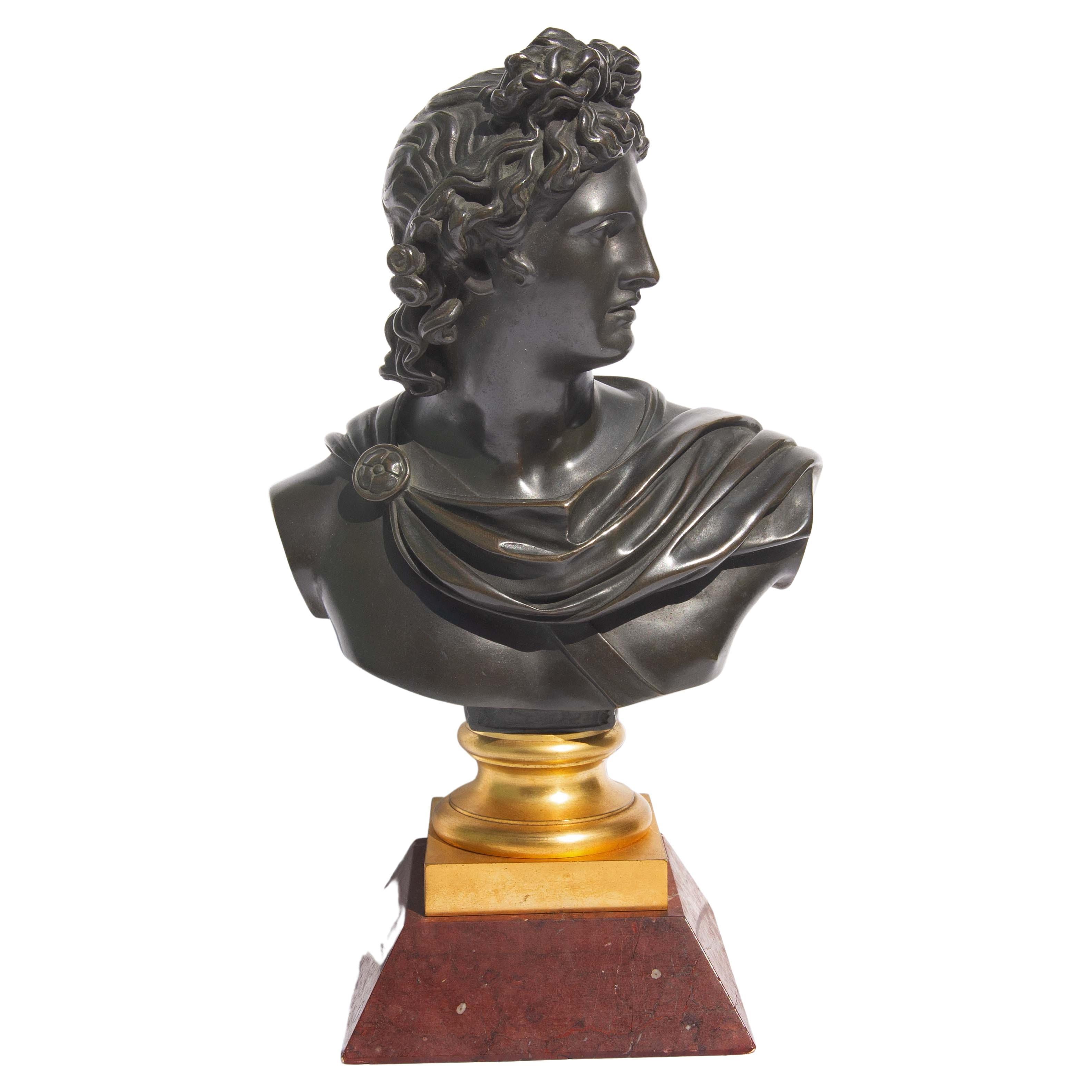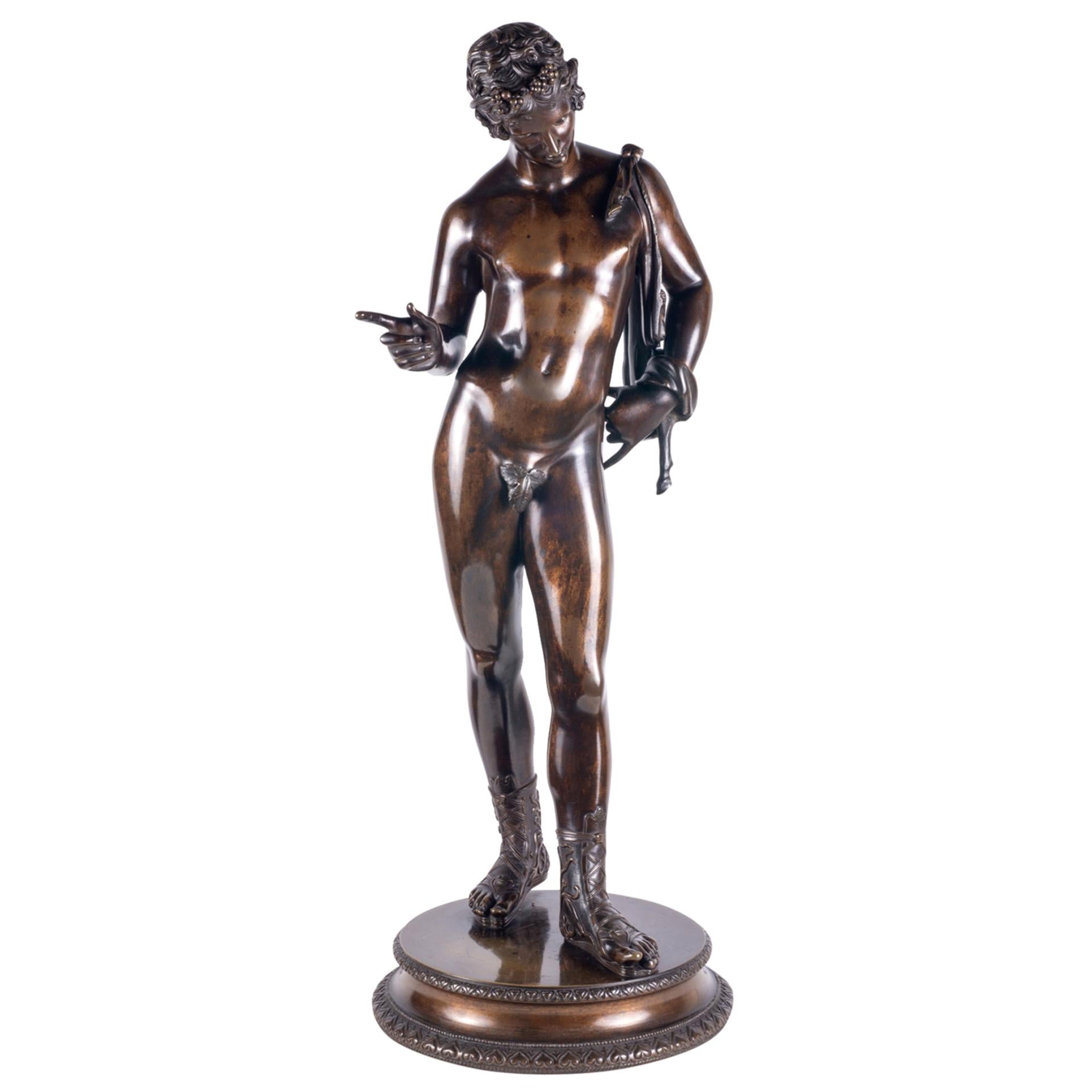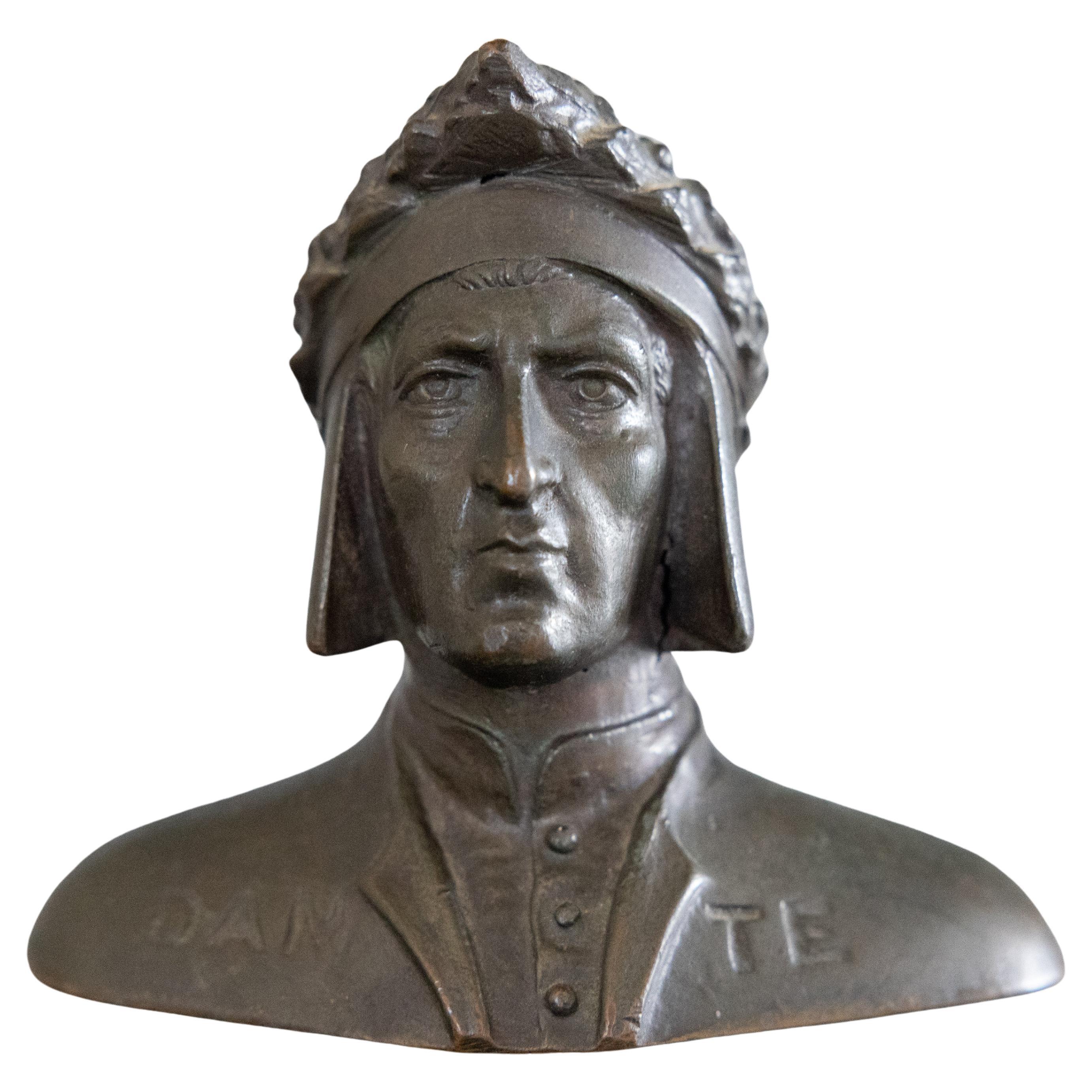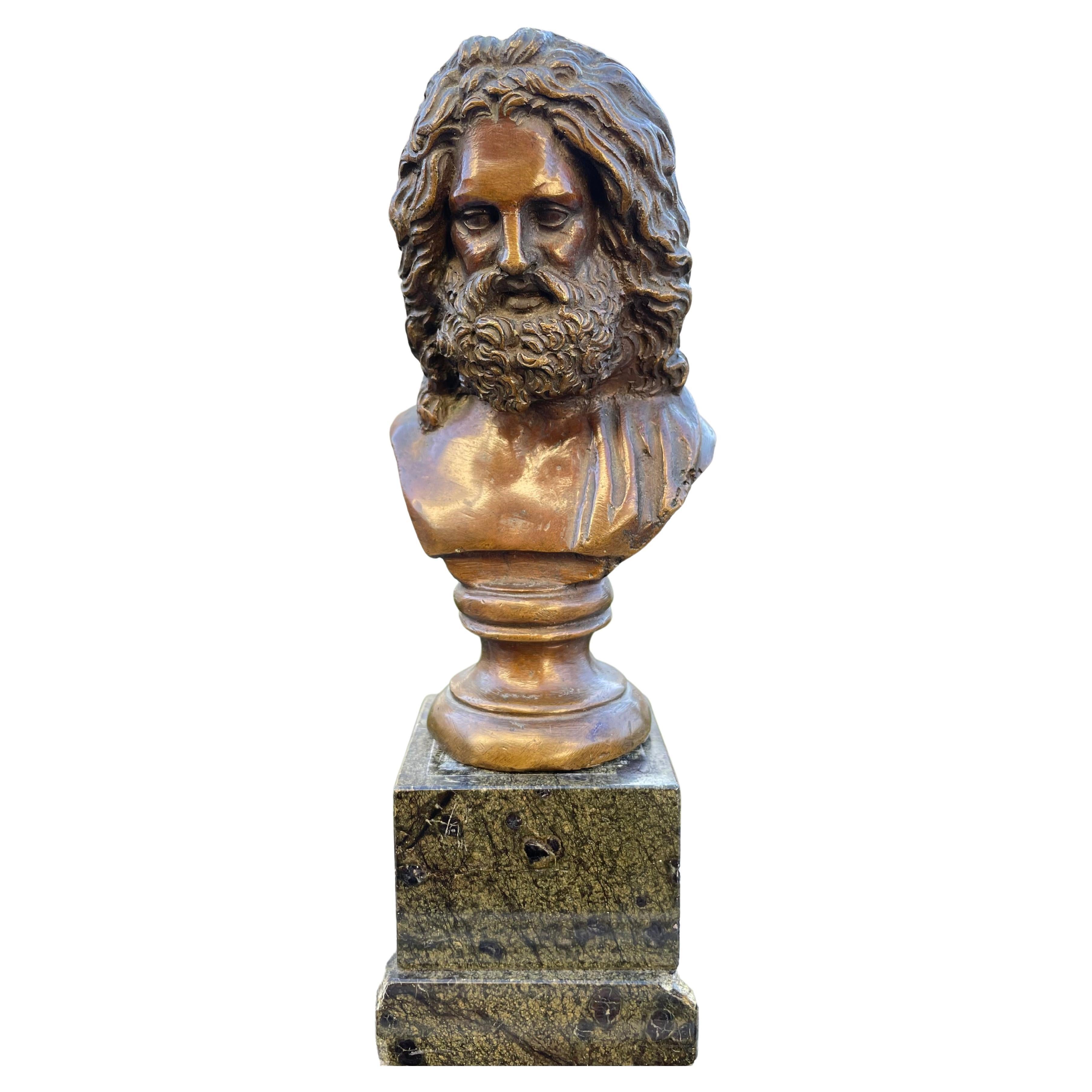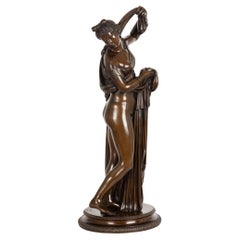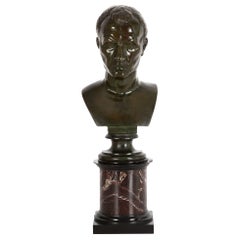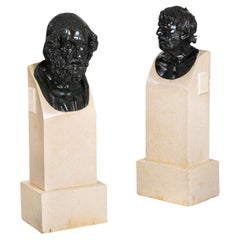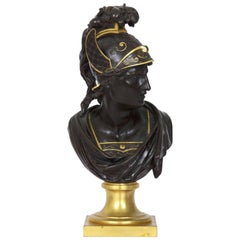
19th Century Grand Tour Bust Bronze Sculpture of Mercury or Hermes
View Similar Items
Want more images or videos?
Request additional images or videos from the seller
1 of 21
19th Century Grand Tour Bust Bronze Sculpture of Mercury or Hermes
About the Item
- Dimensions:Height: 15 in (38.1 cm)Width: 7 in (17.78 cm)Depth: 5 in (12.7 cm)
- Style:Grand Tour (Of the Period)
- Materials and Techniques:
- Place of Origin:
- Period:
- Date of Manufacture:circa 19th Century
- Condition:Wear consistent with age and use. Traces of oxidization to gilded socle; cleaned and polished, traces of verdigris and old grime in crevices. Original patina in exquisite condition.
- Seller Location:Shippensburg, PA
- Reference Number:Seller: 804PJT21Q | Silla, ltd.1stDibs: LU1059010636951
About the Seller
4.9
Recognized Seller
These prestigious sellers are industry leaders and represent the highest echelon for item quality and design.
Platinum Seller
These expertly vetted sellers are 1stDibs' most experienced sellers and are rated highest by our customers.
Established in 2009
1stDibs seller since 2014
473 sales on 1stDibs
Typical response time: 1 hour
More From This SellerView All
- 19th Century Grand Tour Bronze Sculpture “Callipygian Venus” of AntiquityLocated in Shippensburg, PAGRAND TOUR MODEL AFTER ANTIQUITY Naples, Italy (19th Century) "The Callipygian Venus" Sand-cast and patinated bronze signed foundry mark in the base "Fonderia Artistica Sommer Napoli" (active by 1885-1916) cast late 19th century Item # 402KRG29Z A beautifully cast Grand Tour reduction of the Callipygian Venus after the life-size statue of antiquity, the sculpture was executed by the boutique foundry established by Giorgio Sommer (German/Italian, 1834-1914) for the casting of sculpture in bronze and later the carving of sculpture in marble. Giorgio Sommer was a German photographer who spent most of his career in Italy, moving to Naples in 1857 where he first established his photography business. At some point thereafter he opened the foundry, which was rather successful, likely due to the very fine quality of output the firm produced. While most records show the foundry opened in 1885, sources suggest they were producing sculpture early in the 1870s before exhibiting in 1885. Thereafter they produced illustrated cataloges of their sculpture for marketing and distribution. He died in 1914 and the foundry survived him only two years before closing its doors in 1916. The present example is a richly detailed model with extensive carving and articulation of the underlying model; note the rich stylus work in Venus's hair, the handiwork apparent in the repeating motif around the base and the raised signature of the foundry, which is captured directly from the mold and not simply cold-tooled onto the base. The surface throughout is characterized by perfection: smooth and exquisitely finished garments and skin all finished in a medium-brown translucent patina. The model depicts the Callipygian Venus, also known as the Venus Kallipygos or the Aphrodite Kallipygos. The term "Callipygian" is derived from the Greek words "kallos" meaning beautiful, and "pyge" meaning buttocks. The original is an ancient Roman marble statue...Category
Antique 19th Century Italian Grand Tour Figurative Sculptures
MaterialsBronze
- Italian Grand Tour Antique Bronze Sculpture, Bust of Julius CaesarLocated in Shippensburg, PAGRAND TOUR Italian, 19th century Bust of Julius Caesar Patinated and pigmented sand-cast bronze over Violet Breche marble socle unsigned Item # 212WHZ09P A finely cast and beau...Category
Antique 19th Century Italian Grand Tour Busts
MaterialsMarble, Bronze
- Pair of Grand Tour Bronze Busts, “Homer” & “Pseudo-Seneca”, circa 1880By Chiurazzi fondataLocated in Shippensburg, PAGRAND TOUR Italian School Pair of Busts, "Homer" & "Pseudo-Seneca", after Antiquity Patinated bronze mounted on solid marble plinths cast by Chiurazzi, Naples circa 1880 each sealed with foundry cachet on shoulder Item # 304KUV24Y A rare and exciting pair of Grand Tour busts after Antiquity, each is executed in bronze and finished in a Herculaneum black patina with hints of verde in the underlying surface by the foundry of J. Chiurazzi of Naples. Foundry seals are located on their shoulders verso. The first is a fine cast of Homer after the marble bust of Antiquity formerly in the Farnese collection and currently in the permanent collection of the National Archaeological Museum of Naples. It depicts the aged Greek poet and author of the Illiad and the Odyssey as a bearded man dressed in a tunic with a ribbon holding back his hair while concerned wrinkles line his forehead. His eyes are empty and devoid of anything, the absence alluding to his blindness while the sheer intensity of his spirit overwhelms the viewer. His simple garment are a reminder of his poverty. The second bust known as "Pseudo Seneca" is cast after the original bust of antiquity found in 1754 at Herculaneum in the Villa of the Papyri, the home of Lucius Calpurnius Piso Caesoninus, father-in-law of Julius Caesar. The estate was buried in the eruption of Mount Vesuvius. The bust had been thought to be an image of Lucius Annaeus Seneca - Seneca the Younger - the famous Stoic philosopher and fabulously wealthy advisor to Nero. However, after a titled bust of Seneca...Category
Antique 19th Century Italian Grand Tour Busts
MaterialsMarble, Bronze
- French Bronze Sculpture Antique Bust of Greek Warrior, late 19th centuryLocated in Shippensburg, PAFRENCH SCHOOL 4th qtr, 19th century Bust of Greek Warrior Patinated bronze unsigned cast circa late 19th century Item # 304KEX30P A fine ca...Category
Antique 19th Century French Romantic Busts
MaterialsBronze
- 19th Century Carrara Marble Bust Sculpture of Classical StatesmanLocated in Shippensburg, PAA CARVED MARBLE BUST OF A CLASSICAL STATESMAN Carrara marble on separately turned socle unsigned Circa mid-to-late 19th century Item # 307FDI13Q An incredibly powerful bust of ...Category
Antique 19th Century Victorian Busts
MaterialsMarble
- Pair of French Bronze Sculptures Busts “Comedy & Tragedy” by Eugene LaurentBy Emmanuel Marcel LaurentLocated in Shippensburg, PAEUGENE LAURENT French, 1832-1898 "Comedy & Tragedy" Patinated bronze on original black marble bases Unsigned, cast circa 1885 Item # 211PPA29S A rare and exceptional pair of br...Category
Antique 19th Century French Romantic Busts
MaterialsMarble, Bronze
You May Also LikeView All
- 19th Century Italian Grand Tour Bronze and Marble of MercuryLocated in Stamford, CTAn finely cast 19th century Italian bronze depicting the Hermes, the Greek god, (the god Mercury in Roman mythology) seated on carved gray marble. Afte...Category
Antique Late 19th Century Italian Grand Tour Figurative Sculptures
MaterialsMarble, Bronze
- Grand Tour Bronze and Marble Sculpture of the 'Seated Hermes' or MercuryBy Fonderia ChiurazziLocated in Kinderhook, NYA large and exceptional late 19th century Italian Grand Tour sculpture of the ‘Seated Hermes’ attributed to the Chiurazzi Foundry, Naples, Italy. The sol...Category
Antique Late 19th Century Italian Grand Tour Figurative Sculptures
MaterialsMarble, Bronze
- 19th Century Mercury After Giambologna Grand Tour Bronze SculptureLocated in New York, NYFinely cast Grand Tour patinated bronze figure of Mercury after the original by Giovanni da Bologna, aka Giambologna, in French, Jean de Bologne (1529-1608), Apparently unsigned.Category
Antique Late 19th Century Italian Neoclassical Revival Figurative Sculpt...
MaterialsMarble, Bronze
- 'Seated Hermes', a 19th Century Italian Grand Tour BronzeLocated in Chicago, ILAn extraordinary and wonderfully rendered 19th century Italian cast bronze depicting a seated Hermes, the Greek god of messengers, travelers, and merchan...Category
Antique 19th Century Italian Grand Tour Figurative Sculptures
MaterialsBronze
- Grand Tour Bust of Julius Caesar, 19th CenturyLocated in London, by appointment only19th Century Grand Tour statuary marble portrait bust of Julius Caesar 12 July 100 BC – 15 March 44 BC Bust of Julius Caesar Julius Caesar was a...Category
Antique 19th Century Italian Grand Tour Busts
MaterialsMarble
- Bronze Bust of Menelaus King of Sparta Grand Tour, circa 19th CenturyLocated in London, GB19th Century bronze bust Menelaus mythological king of Sparta. A fine casting with rich patina. In Greek mythology, Menelaus (Greek: Menelaos, from "vigor, rage, power" and "people," "wrath of the people") was a king of Mycenaean (pre-Dorian) Sparta, the husband of Helen of Troy, and the son of Atreus and Aerope. According to the Iliad...Category
Antique 1880s French Grand Tour Busts
MaterialsBronze
Recently Viewed
View AllMore Ways To Browse
Bust Greek Apollo
Glow In The Dark Sculpture
Hermes Mercury
Snake Staff
Hermes Sculpture God
Greek God Hermes
Bronze Sculpture Of Hermes
Greek Bronze Helmet
Hermes Wings
Hermes Bust
Hermes Busts
Staff Hermes
Hermes With Wings
Youth Bust
Bust Sculpture Hermes
Apollo Bronze Bust
Hermes Mercury Sculpture
Mercury God Hermes

